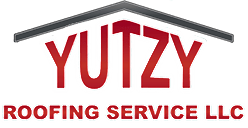Did you know that a new or updated roof can return more than 85 percent of its cost upon resale? So if you are looking to invest in your commercial property, the roof is an aspect you need to consider heavily!
One of the most significant factors that attract business owners to a particular roof design is its roof valleys. A roof valley is a unique focal point of the building\’s design when done right. It also helps direct runoff rainwater away from the foundation – a needed function for just about any building.
Many business owners neglect to include roof valleys in their regular building maintenance despite the appeal. Ignoring these parts of your commercial property can cause several issues over time – some of which are potentially dangerous.
Learn what to watch out for with your roof valley today to avoid paying for roof replacement down the road. We\’ll highlight a few potential problems you should look out for and how to fix them.
What Are Roof Valleys?
A roof valley is a place in your commercial roof where two slopes meet. Water collects in the valley and flows down off the roof. This part of the roof is crucial to its design because it forces all forms of precipitation down instead of collecting and causing damage.
Here are some things to look for if you are wondering if your commercial roof needs to be replaced or repaired:
- cracked caulk or rust spots on the flashing
- roofing sheets that are buckling or curling
- missing or broken roof materials
- cracked or worn down rubber boots around vents
- masses of moss or lichen.
If you find any of the above issues on your roof or in the roof valleys, it\’s time to call a professional and get an inspection done. Below you will find the four most common problems that can cause issues in your roof valleys.
Worn Underlayment
When there are leaks around a roof valley, the problem is often issues with the underlayment. Underlayment is installed on the surface of your roof deck before placing the roof material. It provides extra protection from the elements outside.
In most cases, the lower-rated underlayment doesn\’t last as long as the roofing materials on top. There are various types of underlayment, and one that do-it-yourselfers commonly use is roll roofing. However, roll roofing only lasts about ten years when most of the foams or sheets used on top are guaranteed closer to 15 to 20 years. This difference in time can cause the underlayment to fall apart, leading to leaks in roof valleys.
The solution to this problem is simple: get the longest-lasting material you can find when looking at underlayment!
Thermal Expansion
A significant issue in states where it gets warm is thermal expansion. Thermal expansion is when the valley underlayment expands due to the heat. As a result, the underlayment can wrinkle, crack, or even tear as it grows. These variations in the original installation can lead to water rerouting under the roof material and through those tears.
When installing your underlayment, cut it into smaller sections. Each piece should be two to three feet wide and eight to ten feet long. These smaller pieces of underlayment will be much less likely to wrinkle or buckle, allowing your commercial roof to last longer. In addition, layering these smaller pieces will create a seamless solution for thermal expansion issues.
Standing Seams
Standing seam metal roofing is one of the most durable and water-tight roof systems available. However, the flow of the roof valleys does not run in the same direction as the standing seams. If you reside in a place that gets more severe winter weather, snow can collect in the valleys. Snow and ice get compacted and heavy over time, which will bend the seams.
The bends in the standing seams can get severe enough to cause a leak. A very cheap and easy fix for this problem is purchasing snow guards. Snow guards are placed at the top of the roof valley to keep snow and ice from collecting within.
Cross Wash
Cross wash happens when so much water moves down the valley that it moves up on the other side instead of down. When this happens, it can move underneath the roofing material. Cross washing isn\’t detrimental to your roof when it occurs, but it can create long-lasting damage if it doesn\’t get addressed.
An excellent way to keep cross wash from happening in your roofing valley is to ensure all of the roofing material is fastening properly in the valley. Then you can run a bead of sealant where the roofing material meets the valley underlayment. This process will help avoid damage caused by cross washing.
Roof Valley Repair
If you have roof valley issues, it\’s important to distinguish what is causing it. For the most part, any leaks and problems with your roof valleys are easy to correct. However, the corrections are simple if the leaks are caught before a more significant problem arises! Therefore, it\’s essential to do routine checks of your commercial roof to ensure no leaks or damage.
Make the right choices when you are purchasing underlayment and flashing. The proper purchases up front will keep you from having to do any repairs for a while.
Do You Need The Professionals?
If you know you have roof valley issues and need someone to assess the problem, give the Yutzy Roofing Servicess LLC experts a call! Yutzy Roofing Services is a family-owned business that has had the state of Wisconsin covered since 1995.
Get your roof valleys project started today! Call Yutzy Roofing Services LLC today and set up a free consultation!
